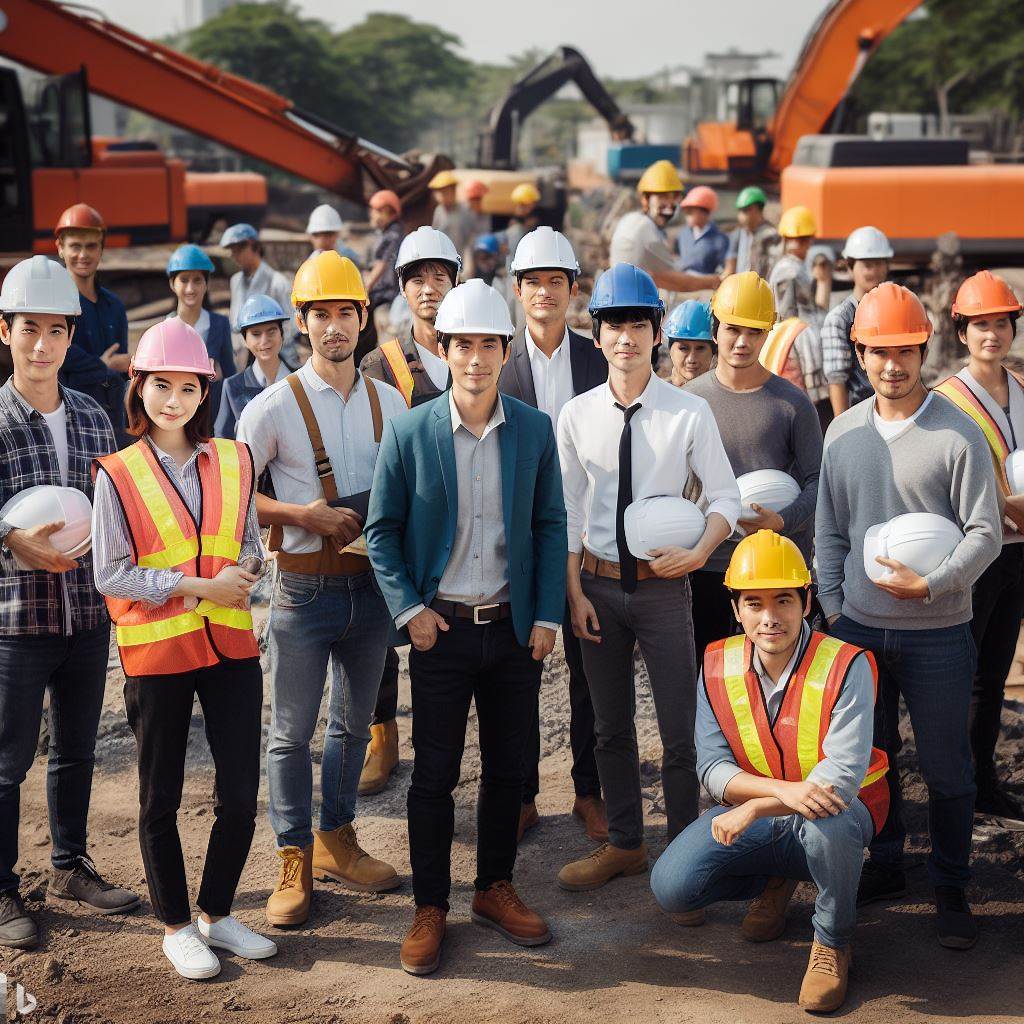Introduction
A brief overview of welding and its importance in the US industry.
Welding is a crucial process in the US industry as it joins materials together, creating strong and durable structures.
Thesis statement: The US industry is actively adapting to emerging technologies in welding to enhance productivity and efficiency.
Over the years, welding has evolved from a manual process to one that incorporates advanced technologies.
The incorporation of emerging technologies in welding has enabled the US industry to achieve higher levels of productivity and efficiency.
This blog chapter aims to explore the various emerging technologies in welding that the US industry has adopted.
By leveraging these technologies, companies can optimize their welding processes, resulting in cost savings and improved quality.
Notably, automated welding systems have gained significant popularity in the US industry.
These systems utilize robots and computer-controlled machinery to perform welding tasks with precision.
Additionally, the use of advanced sensors and monitoring systems allows for real-time analysis of welding parameters.
This real-time data helps companies identify and address any deviations or issues quickly, ensuring high-quality welds.
Furthermore, the integration of virtual reality (VR) and augmented reality (AR) technologies has revolutionized welding training and simulation.
These technologies provide a safe and immersive environment for welders to practice their skills and enhance their expertise.
In conclusion, the US industry recognizes the significance of adopting emerging technologies in welding.
By embracing automation, advanced sensors, and virtual reality, companies can improve productivity, efficiency, and overall weld quality.
The next sections will delve deeper into the specific technologies and their impact on the US industry.
Current state of welding in the US industry
Traditional welding methods and techniques
- Manual Metal Arc Welding (MMAW) is widely used in the US industry.
- Gas Metal Arc Welding (GMAW) is another common technique employed by welders.
- Flux-Cored Arc Welding (FCAW) offers higher deposition rates and increased productivity.
- Shielded Metal Arc Welding (SMAW) is known for its versatility and ability to work in different environments.
- Tungsten Inert Gas (TIG) welding is commonly used for precision welding and thin materials.
Challenges and limitations of traditional welding
- Traditional welding techniques often require skilled and experienced welders.
- Manual welding methods can be time-consuming, leading to delays in project completion.
- Welding in confined spaces or hazardous environments can pose safety risks to the welder.
- Traditional welding methods might not meet the quality standards required by certain industries.
- Manual welding can result in inconsistencies, leading to potential structural weaknesses.
The importance of adopting emerging technologies in welding
- Improved efficiency: Emerging technologies offer increased welding speed and productivity.
- Enhanced quality: Advanced techniques ensure higher precision and minimize defects.
- Safety improvements: Automated welding systems reduce human exposure to hazardous conditions.
- Cost-effectiveness: Adopting new technologies can lead to reduced labor costs and increased competitiveness.
- Industry demands: To meet the evolving needs of various sectors, innovative welding approaches are necessary.
List of emerging technologies in welding
- Laser Beam Welding (LBW): A highly precise method that minimizes heat distortion.
- Electron Beam Welding (EBW): Utilizes a focused beam of electrons for precise and deep welds.
- Friction Stir Welding (FSW): Joins materials through frictional heat and mechanical pressure.
- Robotics and automation: Automated systems offer consistent and reliable welding results.
- 3D printing: Additive manufacturing techniques enable complex and customized welds.
List of benefits of adopting emerging technologies
- Increase in productivity and throughput.
- Reduction in weld defects and rework.
- Improved workplace safety and reduced human errors.
- Enhanced quality control and reliability of welds.
- Ability to achieve complex and customized designs.
In essence, the current state of welding in the US industry predominantly relies on traditional welding methods. However, these techniques come with their own challenges and limitations.
Therefore, the adoption of emerging technologies is crucial to meet the demands of efficiency, quality, safety, and cost-effectiveness.
Laser beam welding, electron beam welding, friction stir welding, robotics, and 3D printing are some of the groundbreaking technologies transforming the welding industry.
By embracing these advancements, the US industry can overcome the limitations of traditional welding and thrive in an increasingly competitive market.
Transform Your Career Today
Unlock a personalized career strategy that drives real results. Get tailored advice and a roadmap designed just for you.
Start NowOverview of emerging technologies in welding
Emerging technologies in welding have brought about exciting advancements in the industry.
This section provides an overview of three key technologies: robotic welding systems, laser welding technology, and 3D printing in welding.
Each of these technologies offers unique advantages and applications within the US industry.
Robotic welding systems
Robotic welding systems have transformed the welding landscape with their numerous benefits.
These systems utilize industrial robots to automate welding processes, resulting in increased efficiency, productivity, and precision.
The advantages of robotic welding systems include:
- Higher welding speeds and deposition rates, leading to shorter production cycles.
- Improved weld quality and consistency, reducing the need for rework and increasing overall product quality.
- Enhanced worker safety by minimizing exposure to hazardous welding environments.
- Cost savings through reduced labor requirements and material waste.
Industries across various sectors have embraced robotic welding systems.
The automotive industry, for example, utilizes these systems to weld car frames and components, improving production efficiency and ensuring consistent weld quality.
Similarly, the aerospace industry benefits from the precision and repeatability of robotic welding for aircraft assembly.
Laser welding technology
Laser welding technology has gained significant popularity in the welding industry due to its unique advantages.
With laser welding, a laser beam is used to melt and join materials together, offering capabilities that surpass traditional welding techniques.
The advantages of laser welding technology include:
- Highly concentrated heat source allows for minimal heat input and low distortion of materials.
- Precise control over the welding process, enabling intricate and fine welding applications.
- Ability to join dissimilar materials and materials with differing thicknesses.
- Faster welding speeds compared to conventional methods, resulting in increased productivity.
The US industry has embraced laser welding technology across various sectors.
It finds applications in the automotive industry for welding car bodies and components, the electronics industry for micro-joining delicate electronic parts, and the medical industry for precision welding of medical devices.
3D printing in welding
3D printing, also known as additive manufacturing, has revolutionized welding processes by enabling the production of complex geometries with high precision.
The integration of 3D printing in welding processes offers several advantages:
- Ability to create intricate and customized weldments that were previously challenging to produce.
- Reduced material waste by only utilizing the required amount of material for each weldment.
- Improved design flexibility and freedom, enabling the use of lightweight structures.
- Streamlined prototyping and rapid product development cycles.
The integration of 3D printing in welding processes has gained significant attention in recent years.
This technology has been applied in industries ranging from automotive and aerospace to construction and energy.
It allows for the production of complex weldments with enhanced structural integrity and reduced weight.
Showcase Your Business Today
Reach thousands of readers actively exploring professional services. Publish your business profile and grow your audience now.
Publish NowIn fact, emerging technologies in welding, such as robotic welding systems, laser welding technology, and 3D printing, have revolutionized the industry.
Each technology provides unique advantages and finds applications in various industries within the US.
Embracing these technologies can lead to improved productivity, quality, and efficiency in the welding processes.
Benefits of adapting to emerging technologies in welding for the US industry
Adapting to emerging technologies in welding brings numerous benefits to the US industry.
The following points shed light on the advantages that such a transition can offer:
Increased productivity and efficiency
The US industry can witness a significant increase in productivity and efficiency by fully embracing the advancements in welding technologies.
The integration of cutting-edge tools and techniques allows for faster and more precise welding processes.
This leads to faster project completion times, higher output, and improved overall efficiency.
Improved quality and precision
With the adoption of emerging welding technologies, professionals in the US industry can achieve a remarkable improvement in quality and precision.
Automated systems and robotic welding eliminate the risks of human error, ensuring consistent and flawless welds.
This translates into higher quality products, reduced rework, and increased customer satisfaction.
Cost savings and waste reduction
Integrating emerging technologies in welding can result in substantial cost savings for the US industry.
By replacing manual labor with automated systems, companies can significantly reduce labor costs.
Additionally, the enhanced precision offered by these technologies minimizes material waste, leading to optimal resource utilization and cost reduction.
Enhanced worker safety and reduced labor requirements
The adoption of emerging technologies in welding prioritizes worker safety within the US industry.
Robots and automated systems excel in handling hazardous tasks, replacing humans in dangerous welding environments.
This minimizes the risk of injuries and ensures a safer work environment for all employees.
Furthermore, by reducing the need for manual labor, the industry can experience reduced labor requirements and optimize labor allocation for other critical tasks.
Therefore, the US industry stands to gain various benefits by adapting to emerging technologies in welding.
Increased productivity, improved quality, and reduced costs are just a few among the many advantages.
While the initial investment may be a consideration, the long-term gains and competitive edge achieved through embracing these technologies make it a worthwhile endeavor.
Read: Top 10 Cities for Welders in the USA: Where to Work?

Examples of US industry’s adoption of emerging welding technologies
Case study 1: Automotive manufacturing sector
- Implementation of robotic welding systems
- Positive outcomes and benefits
The automotive manufacturing sector in the United States has witnessed significant advancements in welding technologies in recent years.
One notable example of the industry’s adoption of emerging technologies is the implementation of robotic welding systems.
With the help of robotic welding systems, automakers have been able to automate the welding process, eliminating the need for human welders to perform repetitive and physically demanding tasks.
These robotic systems use advanced sensors and algorithms to precisely weld components together, resulting in improved accuracy and efficiency.
The implementation of robotic welding systems has brought several positive outcomes and benefits for the automotive manufacturing sector.
Firstly, it has significantly increased productivity by reducing cycle times and increasing production rates.
Robotic welding systems can operate 24/7 without experiencing fatigue or human errors, leading to a higher output of welded components.
Secondly, the use of robotic welding systems has improved the overall quality of welded joints in automobiles.
Robotic systems can consistently deliver precise welds, ensuring strong and durable connections between components.
This has reduced the occurrence of defects and the need for reworks, resulting in cost savings for automakers.
Case study 2: Aerospace industry
- Integration of laser welding technology
- Impact on productivity and quality
The aerospace industry in the United States has also embraced emerging welding technologies, particularly the integration of laser welding technology.
Laser welding offers numerous advantages over traditional welding methods in the aerospace industry.
It utilizes focused laser beams to melt and fuse metal components together, providing precise control and minimizing heat-affected zones.
This enables aerospace manufacturers to weld delicate and complex parts without causing distortions or weakening the materials.
The integration of laser welding technology has had a significant impact on productivity and quality in the aerospace industry.
Firstly, laser welding allows for faster welding speeds compared to conventional methods.
The concentrated heat source of the laser beam can rapidly melt and join metal parts, reducing overall processing time and increasing production rates.
Moreover, laser welding ensures high-quality welds with minimal defects.
Showcase Your Business Today
Reach thousands of readers actively exploring professional services. Publish your business profile and grow your audience now.
Publish NowThe precise control of the laser beam allows for consistent penetration and fusion, resulting in strong and reliable joints.
This is crucial for ensuring the structural integrity of aerospace components, where safety and performance are paramount.
Generally, the US industry has actively embraced emerging welding technologies, as demonstrated by case studies in the automotive manufacturing sector and the aerospace industry.
The implementation of robotic welding systems and the integration of laser welding technology have resulted in positive outcomes such as increased productivity, improved quality, and cost savings.
These examples highlight the importance of continuous innovation and adaptation to drive progress in the welding industry.
Read: Welding Schools in the USA: Picking the Best for Your Career
Challenges and Considerations in Adopting Emerging Technologies in Welding
Initial Investment and Cost Implications
- Implementing emerging technologies in welding requires a significant initial investment.
- Companies need to consider the cost implications and potential return on investment.
- Procuring advanced equipment, such as robotic welding systems, can be expensive.
- The costs involve not only purchasing the technology but also installation, maintenance, and repairs.
- The overall impact on the bottom line should be carefully evaluated before making financial commitments.
Workforce Training and Skill Development
- The adoption of emerging technologies in welding necessitates the training and development of the workforce.
- Welders must acquire new skills to operate and maintain advanced equipment effectively.
- Providing adequate training programs and opportunities for skill enhancement is crucial.
- Companies should invest in training to ensure workers can adapt to the technological changes.
- Employers must also address potential resistance from skilled welders who are accustomed to conventional methods.
System Integration and Compatibility with Existing Infrastructure
- Integrating emerging technologies into existing welding infrastructure can be challenging.
- Compatibility issues may arise between old and new systems, affecting workflow and productivity.
- Companies must evaluate whether their current infrastructure can support the new technologies.
- Adjustments or upgrades to existing equipment and facilities might be necessary.
- Ensuring a seamless integration between different components is essential for optimal performance.
Essentially, the adoption of emerging technologies in welding presents several challenges and considerations.
Companies must carefully assess the initial investment and cost implications, considering the potential return on investment.
Additionally, workforce training and skill development are vital to equip welders with the necessary capabilities to operate and maintain advanced equipment.
System integration and compatibility with existing infrastructure should also be evaluated to ensure a smooth transition and optimal performance.
Addressing these challenges will enable industries to embrace the benefits offered by emerging technologies, leading to improved welding processes and overall efficiency.
Read: Safety Protocols Every US Welder Must Know and Follow
Future prospects of emerging technologies in welding for the US industry
Advancements in robotic welding systems
- Robotic welding systems have the potential to revolutionize the welding industry in the US.
- These systems offer increased precision, speed, and efficiency compared to traditional welding methods.
- With the use of advanced sensors and programming, robots can adapt to various welding tasks.
- The adoption of robotic welding systems can lead to improved weld quality and reduced production costs.
- Robotic welding systems also minimize human error and ensure consistent welds, resulting in better product reliability.
- Additionally, these systems can enhance the safety of welders by reducing their exposure to hazardous environments.
- The US industry can leverage the advantages of robotic welding systems to enhance competitiveness on a global scale.
Potential applications of laser welding technology
- Laser welding technology holds significant promise for the US welding industry.
- It offers high precision and control, making it suitable for welding small and intricate components.
- Laser welding provides excellent weld quality with minimal deformation and heat-affected zones.
- This technology enables welding of dissimilar materials, expanding the range of applications.
- Laser welding has the potential to improve productivity due to its fast welding speeds.
- Industries such as automotive, aerospace, and electronics can greatly benefit from laser welding technology.
- The US industry can explore collaborations and research in laser welding to drive innovation and adoption.
Integration of artificial intelligence in welding processes
- The integration of artificial intelligence (AI) can transform welding processes in the US industry.
- AI algorithms can analyze welding data in real-time and optimize parameters for improved outcomes.
- By monitoring and adjusting variables, AI can ensure consistent weld quality and reduce defects.
- AI-powered welding systems can learn from historical data and refine welding techniques over time.
- Predictive maintenance enabled by AI can minimize equipment downtime and reduce overall costs.
- AI integration also enables real-time quality control, ensuring compliance with industry standards.
- The US industry can embrace AI in welding to enhance productivity, efficiency, and competitiveness.
Basically, the future prospects of emerging technologies in welding for the US industry are promising.
Advancements in robotic welding systems offer increased precision and efficiency, while potential applications of laser welding technology expand the range of possibilities.
Furthermore, the integration of artificial intelligence in welding processes brings improved quality control and predictive maintenance.
Embracing these technologies can position the US industry at the forefront of innovation and enhance its competitiveness globally.
Read: Comparing Salaries: Welder Income Trends Across US States
Find Out More: Essential Tools & Gear: Every Construction Worker’s Checklist.
Conclusion
Adapting to emerging technologies in welding is crucial for the US industry’s sustainability and growth.
By embracing these advancements, companies can enhance their productivity, quality, and competitiveness.
Furthermore, adopting new technologies allows businesses to stay ahead of the curve and meet changing customer demands.
Investing in research and development of emerging welding technologies can unlock novel solutions to industry challenges.
Robotic welding, laser welding, and additive manufacturing all hold immense potential for revolutionizing the welding industry.
Notably, robotic welding systems can greatly increase efficiency, speed, and precision while reducing labor costs.
Laser welding, on the other hand, offers exceptional control, enabling welding of intricate and delicate components.
Additive manufacturing, or 3D printing, has the power to transform the production process and reduce material waste.
As the industry embraces these emerging technologies, collaboration between industry stakeholders and technology providers is essential.
Government support, in the form of funding and policy incentives, should also be encouraged to further drive adoption and innovation.
The future of welding is exciting, with emerging technologies reshaping traditional manufacturing processes.
By leveraging these advancements, the US industry can maintain its global competitiveness and lead the way in innovation.
Adapting to emerging technologies in welding is not only necessary but also advantageous for the US industry.
Industry stakeholders should embrace these advancements and collaborate to drive sustainable growth in the welding sector.
By doing so, the industry can overcome challenges, stay relevant, and shape a promising future for welding.
[E-Books for Sale]
The Big Book of 500 High-Paying Jobs in America: Unlock Your Earning Potential
$19.99 • 500 High-Paying Jobs • 330 pages
Explore 500 high-paying jobs in America and learn how to boost your career, earn more, and achieve success!
See All 500 High-Paying Jobs of this E-Book
1001 Professions Without a Degree: High-Paying American Jobs You Can Start Now
$19.99 • 1001 Professions Without a Degree • 174 pages
Discover 1001 high-paying jobs without a degree! Unlock career tips, skills, and success strategies for just $19.99!




